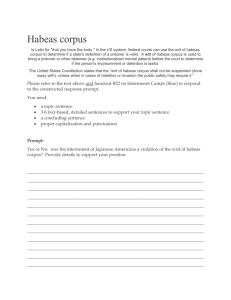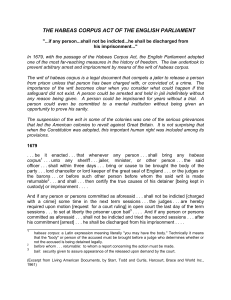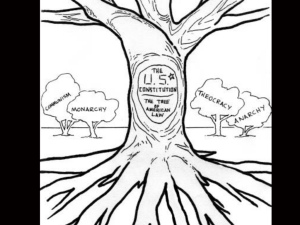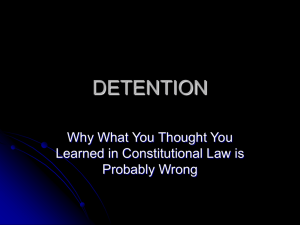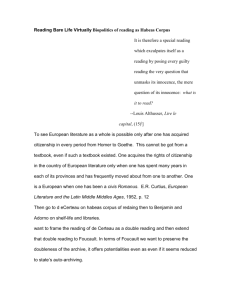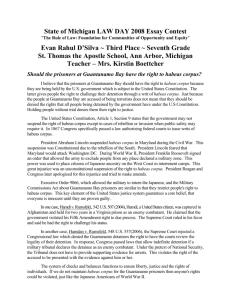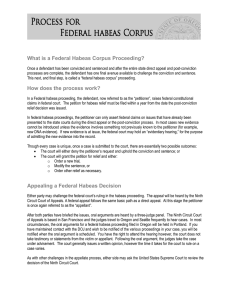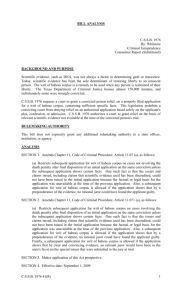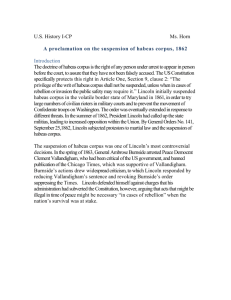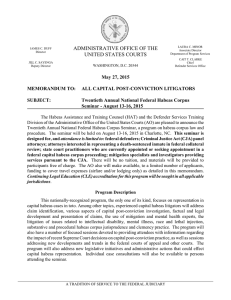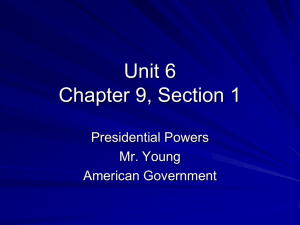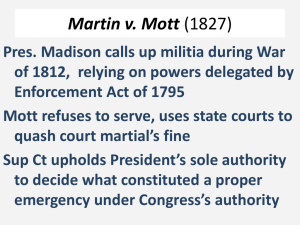Post-conviction Remedies Law 8822 Professor O'Brien There is no
advertisement
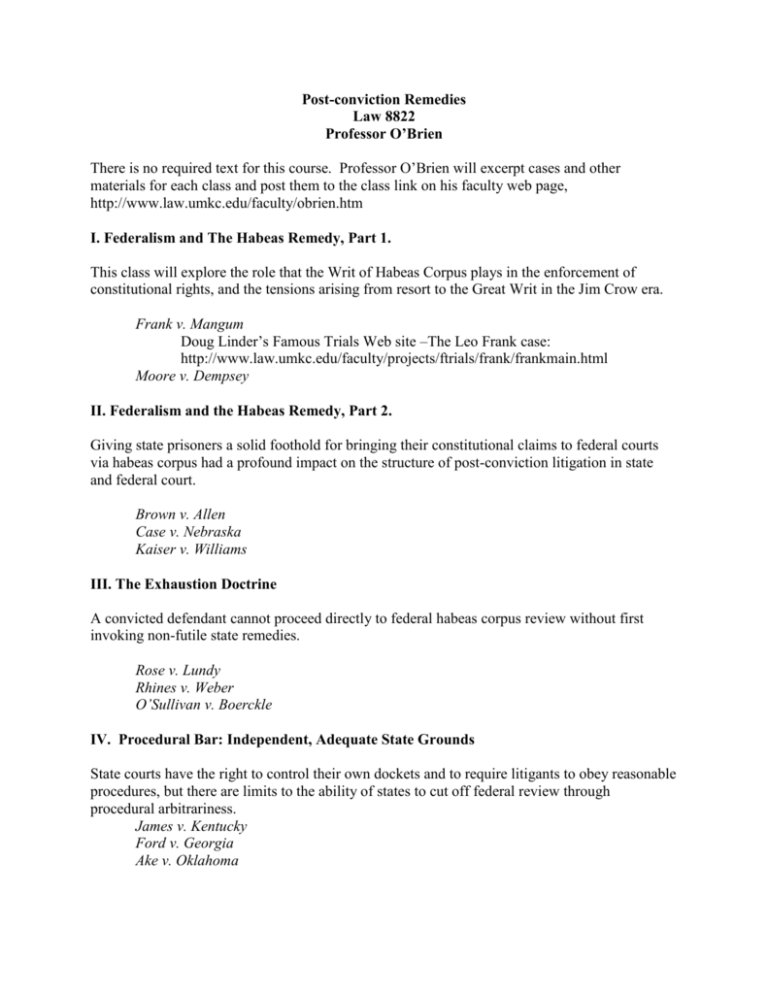
Post-conviction Remedies Law 8822 Professor O’Brien There is no required text for this course. Professor O’Brien will excerpt cases and other materials for each class and post them to the class link on his faculty web page, http://www.law.umkc.edu/faculty/obrien.htm I. Federalism and The Habeas Remedy, Part 1. This class will explore the role that the Writ of Habeas Corpus plays in the enforcement of constitutional rights, and the tensions arising from resort to the Great Writ in the Jim Crow era. Frank v. Mangum Doug Linder’s Famous Trials Web site –The Leo Frank case: http://www.law.umkc.edu/faculty/projects/ftrials/frank/frankmain.html Moore v. Dempsey II. Federalism and the Habeas Remedy, Part 2. Giving state prisoners a solid foothold for bringing their constitutional claims to federal courts via habeas corpus had a profound impact on the structure of post-conviction litigation in state and federal court. Brown v. Allen Case v. Nebraska Kaiser v. Williams III. The Exhaustion Doctrine A convicted defendant cannot proceed directly to federal habeas corpus review without first invoking non-futile state remedies. Rose v. Lundy Rhines v. Weber O’Sullivan v. Boerckle IV. Procedural Bar: Independent, Adequate State Grounds State courts have the right to control their own dockets and to require litigants to obey reasonable procedures, but there are limits to the ability of states to cut off federal review through procedural arbitrariness. James v. Kentucky Ford v. Georgia Ake v. Oklahoma V. Successive Petitions and Abuse of the Writ Theoretically, prisoners get “one bite at the apple” when it comes to post-conviction review; repetitious habeas proceedings are discouraged. Salinger v. Loisel Fay v. Noia McCleskey v. Zant Stewart v. Martinez-Villareal VI. Retroactivity Teague v. Lane Butler v. McKellar VII. Fact-finding in Post-Conviction Habeas Corpus is not an appeal; it is an independent cause of action about the constitutionality of a conviction and sentence. More often than not, such cases turn on issues of fact. Townsend v. Sain Blackledge v. Allison Keeney v. Tamayo-Reyes VIII. Safety Valves Habeas Corpus is an equitable remedy. Invoking principles of equity, the Court has developed exceptions to issue-preclusion doctrines. A. Cause-and-Prejudice Wainwright v. Sykes Amadeo v. Zant Reed v. Ross B. Miscarriage of Justice Sanders v. United States Kuhlman v. Wilson Murray v. Carrier Sawyer v. Whitley Schlup v. Delo House v. Bell IX. Litigation Resources for Indigent Prisoners A. The Right to Counsel Evitts v. Lucey Pennsylvania v. Finley Murray v. Girratano Coleman v. Thompson B. Funds Ake v. Oklahoma Williams v. Taylor McFarland v. Scott X. The Death Penalty and Habeas Corpus Movements to “reform” habeas corpus are driven by delays in the execution of death sentences. Jim Liebman, A Broken System A. Stays of Execution Barefoot v. Estelle Stokes v. Delo B. AEDPA: Statutes of Limitations, Deference to State Decisions, Certificates of Appealability and Bars on Successive Petitions Felker v. Turpin Williams(Terry) v. Taylor Williams (Michael) v. Taylor Artuz v. Bennett Slack v. McDaniel Cullen v. Pinholster C. State innovations Canon v. Mullin Whitmore v. Arkansas Dawan v. Lockhart XI. Other Post-Conviction Remedies A. Executive Clemency Woodard v. Ohio Young v. Hayes B. Post-decision motions Gonzalez v. Crosby C. Miscellaneous Procedures A. DNA statutes and Innocence Protection B. 28 U.S.C. sec. 1983.
